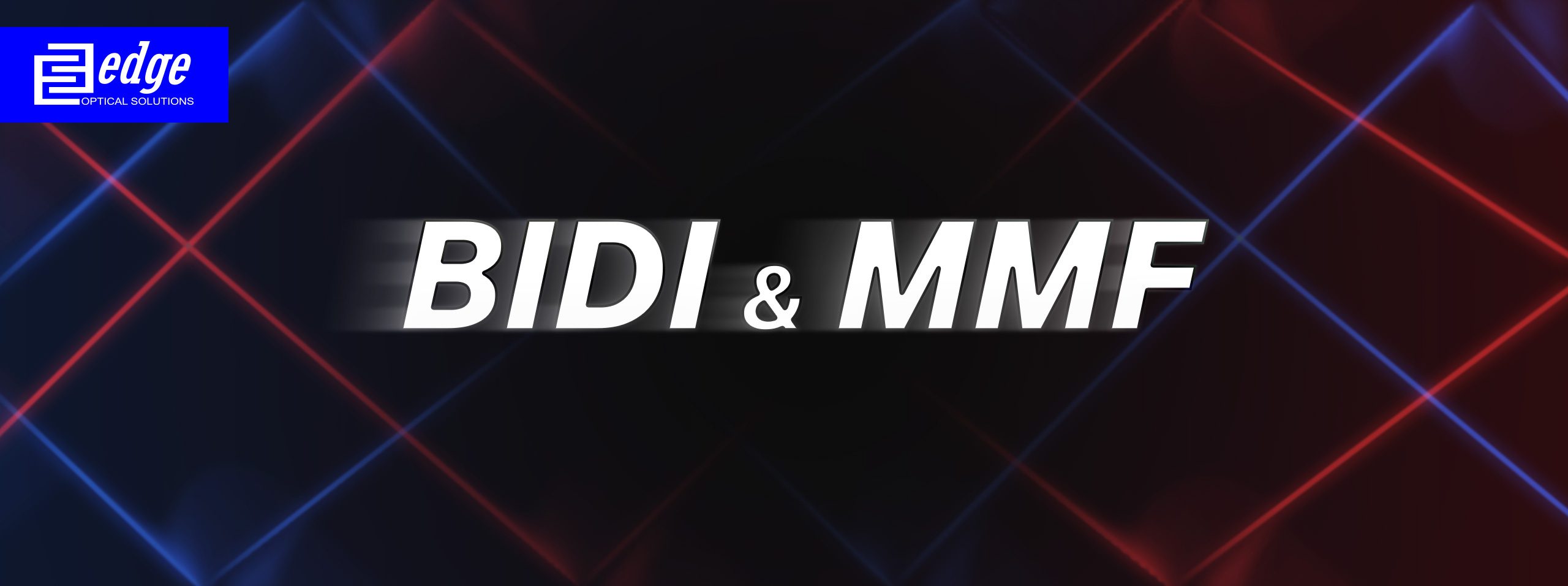
1G and 10G SFP BiDi Transceivers on Multimode fiber
Bidirectional optical transceivers by its definition allows full-duplex optical transmission through one optical fiber. This is achieved with two independent signals which differs from each other with their wavelength 1310nm/1550nm, or 1310nm/1490nm. BiDi transceivers are designed to be used with Single Mode fiber, in distances from 10km till 120km utilizing laser as light source.
As we all know signal is transmitted as light impulse which travels in optical fiber core, side to side bouncing off cladding. Single mode fiber (OS2) has 9um diameter core which is much smaller than multimode fiber core diameter 50um (OM2). Smaller core minimizes this impulse bouncing and therefore allows to achieve greater distances.
Nowadays there are places where legacy multimode infrastructure still exists. Mostly this infrastructure is observable on the business premises as short distance connections, for example to connect near located buildings. As the cabling still is usable, then why not to use it wisely?
Classically multimode fiber is used together with multimode dual fiber transceivers. These transceivers usually has simple and cheap LED or lasers as light sources, which produce signals at 850nm and cover 550 meters max distance. Natively BIDI transceivers specifically for multimode fiber does not exist. So the big question today is if single mode 1G BiDi LX transceivers is capable to achieve working condition when connected with multimode fiber?
- 1G BiDi LR (EDGE PN: BIDI-1.25G-SFP-10-AD, 1310nm/1550nm) transceiver connected with OM2 grade multimode cable assured no CRC error free transmission till 300 meters;
- 1G BiDi LR (EDGE PN: BIDI-1.25G-SFP-10-AD, 1310nm/1550nm) transceiver connected with OM3 grade multimode cable assured no CRC error free transmission till 500 meters;
Additionally 10G BiDi transceiver (EDGE PN: BIDI-10G-SFP-10) connected with OM3 grade multimode cable assured no CRC error free transmission till 200 meters. (OM1 and OM2 should work for much smaller distance, because of fact these fibers are not laser optimized)
So what is happening when we use transceivers destined for “long range” communication in legacy multimode fiber?
Long range transceiver has a 9um laser output diameter. It matches single mode fiber core diameter therefore its signal can be precisely inputted in single mode fiber. But if we connect this transceiver to multimode fiber, the multimode fiber core (50um) is much larger than single mode fiber core (9um). At the signal transmission direction there will be no problem because 9um wide signal will be inserted precisely in the center of 50um fiber core. But problems happen at receiving end. The optical signal when it propagates fiber, it scatters and bounces through all of the 50um core. And at the receiver end, small fraction of signal will be detected by the 9um transceiver detector. Largest signal part will be lost and can be defined as “huge insertion loss”.
Our tests concluded that multimode fiber can be used with BiDi Single mode transceivers, but distance is limited due to multimode fiber construction and factor how many bends cable has. Each cable bend will cause signal more to propagate alongside the cladding, therefore increasing insertion loss at the receiving end (decreasing transmission distance).
If You have any other questions- please do not hesitate to contact Us!



